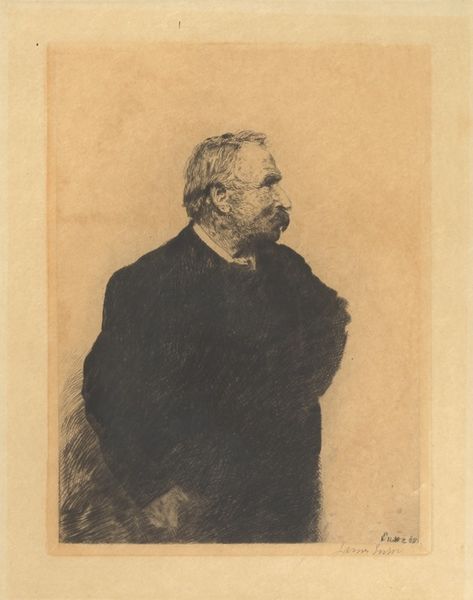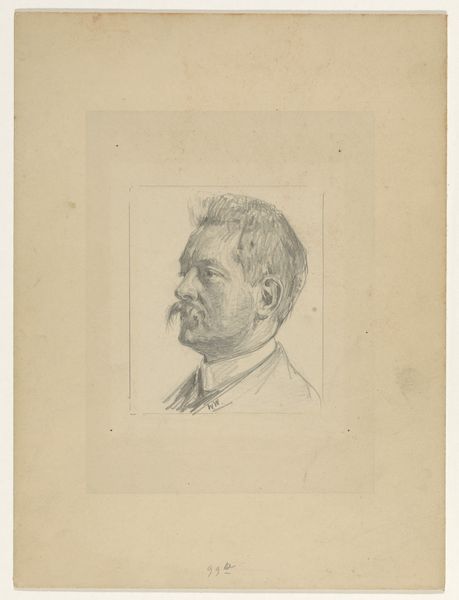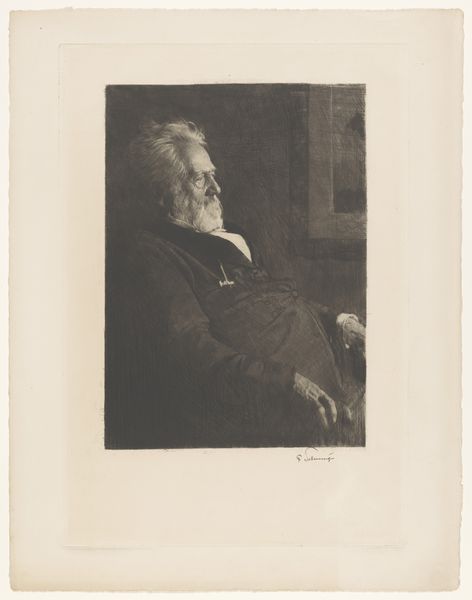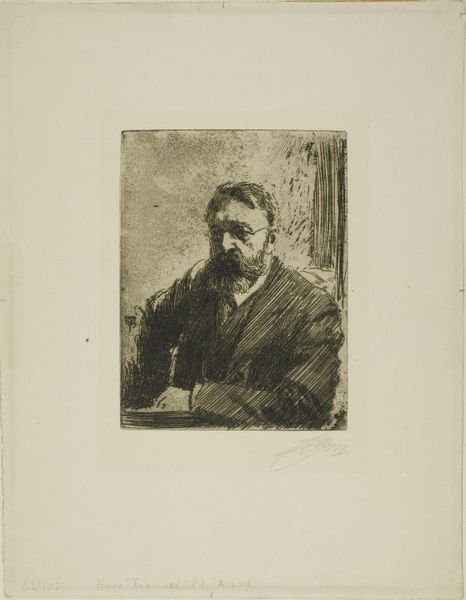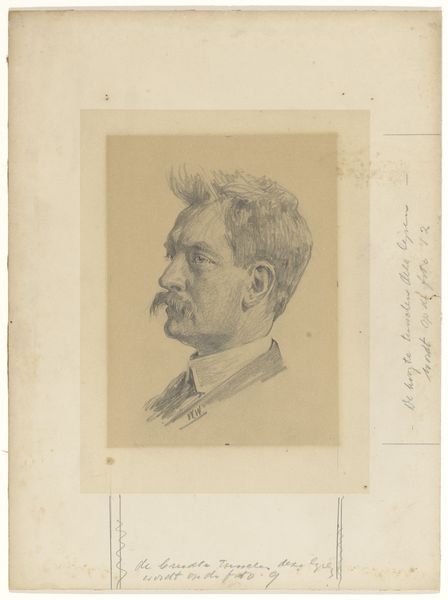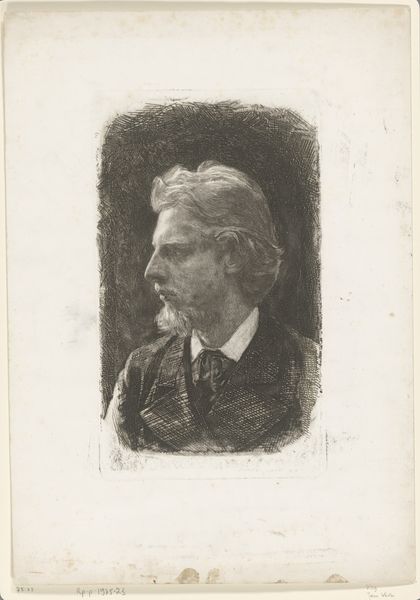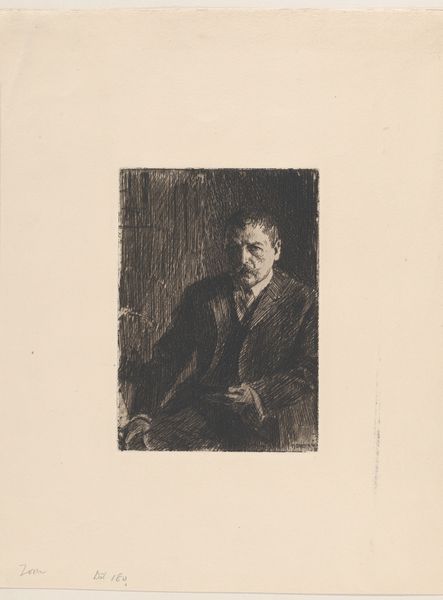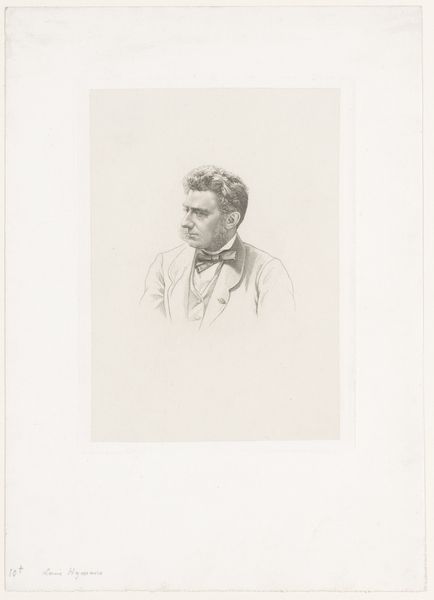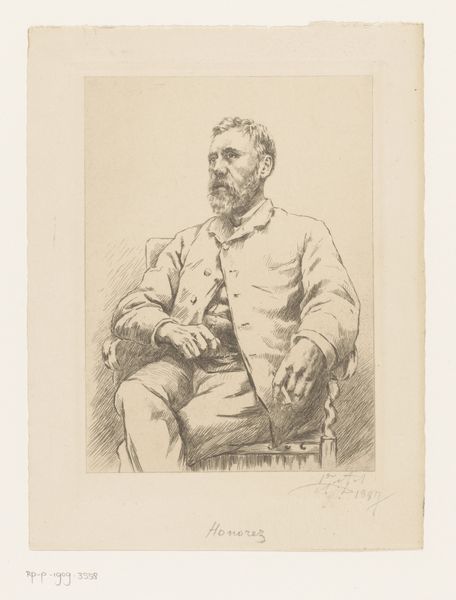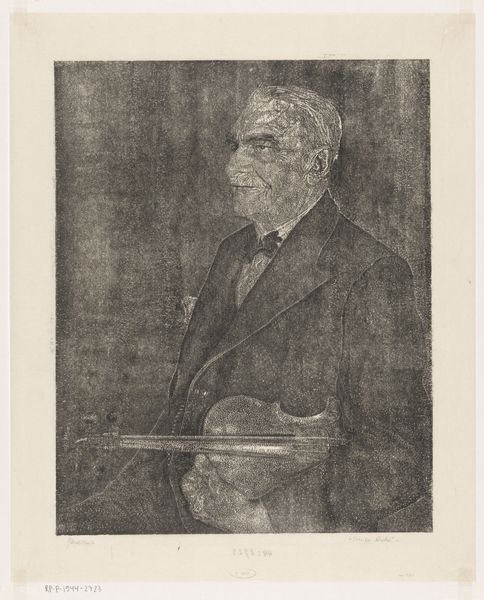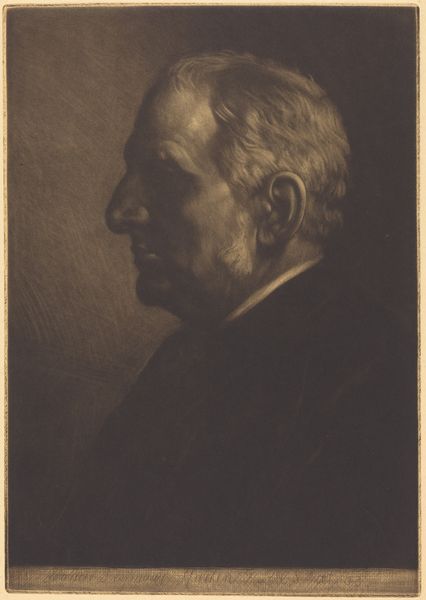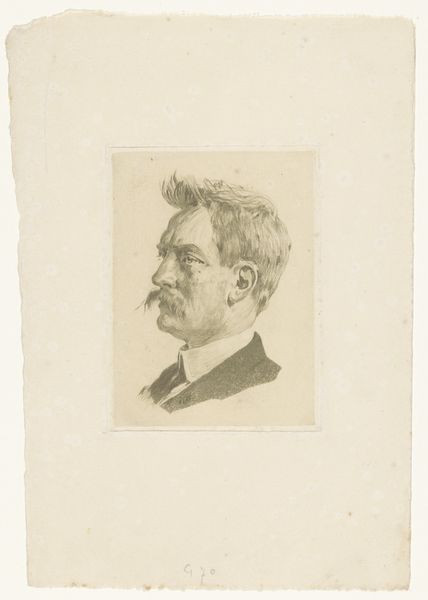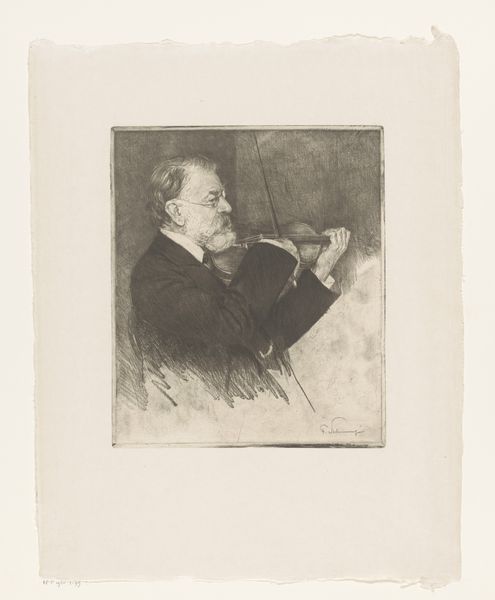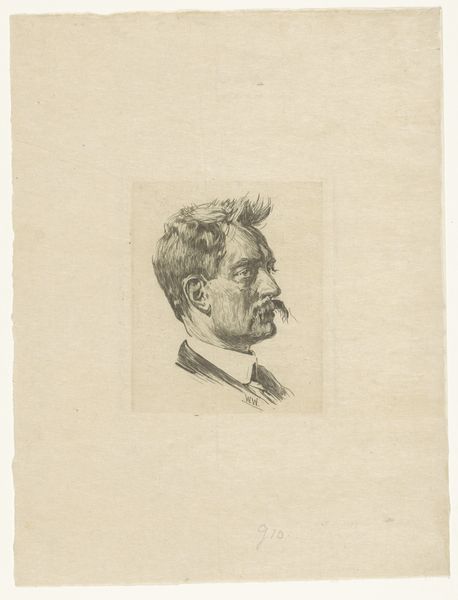
drawing, print, etching, intaglio
#
pencil drawn
#
drawing
#
light pencil work
# print
#
etching
#
intaglio
#
pencil sketch
#
portrait reference
#
pencil drawing
#
portrait drawing
Dimensions: height 445 mm, width 395 mm
Copyright: Rijks Museum: Open Domain
Curator: This is Ferdinand Schmutzer’s “Portret van Hugo Wolf,” created sometime between 1880 and 1928. The artwork employs intaglio and etching on print, resulting in a striking depiction. Editor: My first thought is of a somber contemplation, the use of light pencil work conveying a quiet intensity. The figure almost fades into the background, yet holds your gaze. Curator: Hugo Wolf was a prominent composer known for his lieder, and Schmutzer captures a certain introspection fitting of a creative personality, likely shaping and influenced by Vienna's music scene. These portrait drawings gain relevance in art history due to Wolf’s significance, making Schmutzer part of artistic legacies. Editor: And thinking about that etching process itself, you know, layering acid to carve lines into the metal, pressing that onto paper... it mimics the layering of Wolf's compositions. All those considered details etched, leaving traces for others. It speaks to artistic labor— the tangible act of creation and its translation into printed image accessible for consumers. Curator: Absolutely, these kinds of images allowed for wider dissemination of a public figure's image and promoted cultural identity in society at that time. Wolf became a recognizable celebrity via mass production. It brings forward the connection of power and portraiture; Wolf would've needed social influence to get to this point of recognizability and demand for distribution! Editor: Considering the 'light pencil work,' though—do you think that speaks to the ephemerality of fame and life? Here's the musician and it may suggest mortality but his artistic echoes survive in his craft and printed documentation! The physical act of Schmutzer's printing preserves that creative labor, making his legacy even richer and more approachable across history! Curator: The institutional contexts are everything, as is Wolf’s position. Thank you for those points about labor; without print shops these etchings stay within artistic circles or with the Wolf's immediate contacts— that printing work truly amplifies visibility across contexts! Editor: The materials shape it. The socio-political backdrop frames it. So, with a somber glance, the musician and labor give much to consider with just one drawing!
Comments
No comments
Be the first to comment and join the conversation on the ultimate creative platform.
